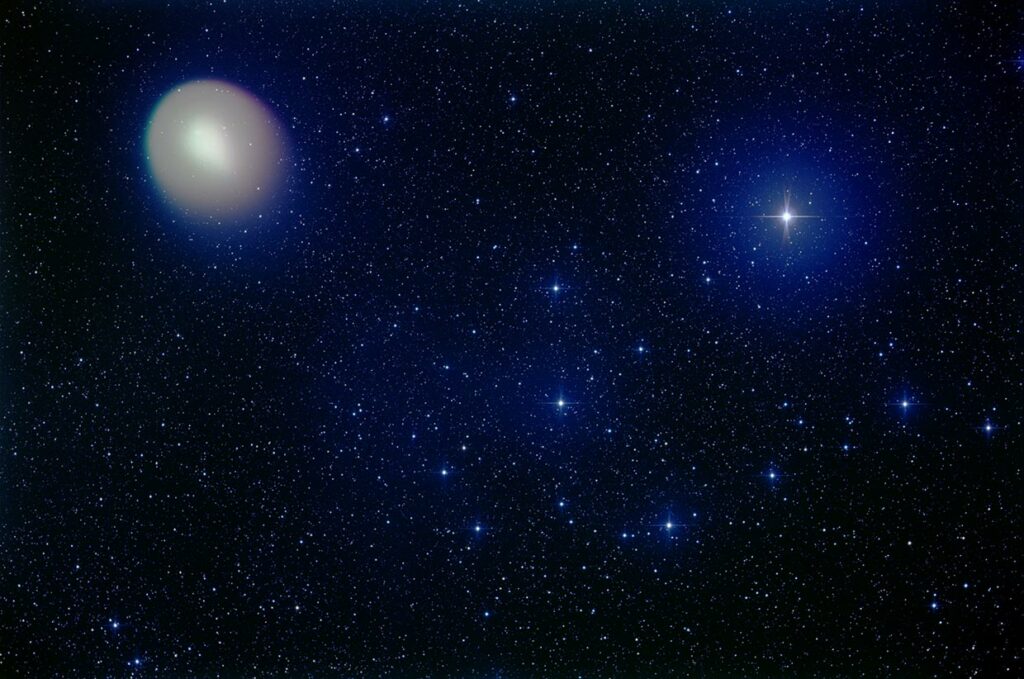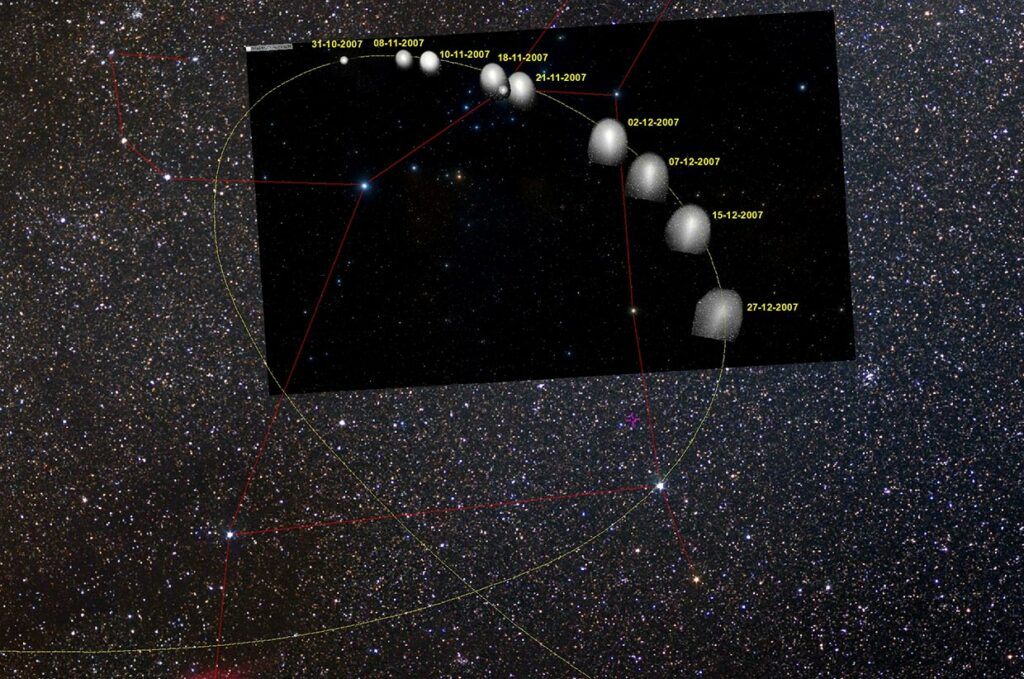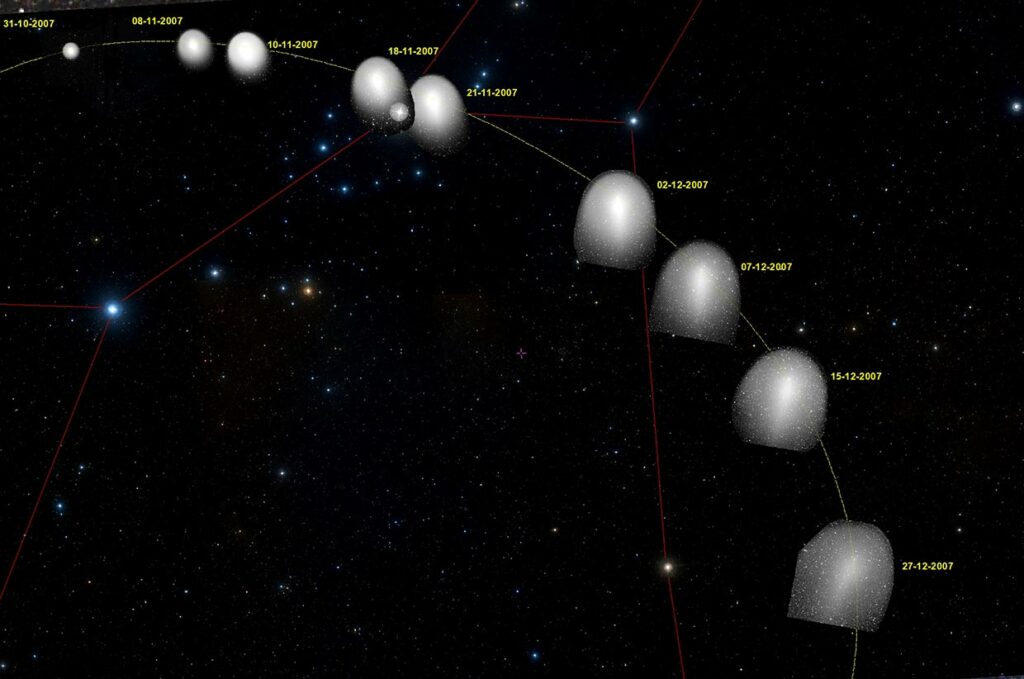Árið 1892 uppgötvaði enski áhugastjörnufræðingurinn Edwin Holmes (1839-1919) halastjörnu, á meðan hann sinnti reglubundnum athugunum á Andrómeduþokunni (Messier 31). Seinna kom í ljós að hún er umferðarhalastjarna (á sporbraut um sól) og er umferðartími hennar 6,9 ár. Halastjarnan, sem er kennd við Holmes, er yfirleitt of dauf til sjónskoðunar í dæmigerðum áhugamannasjónaukum. En dagana 23.-24. október 2007 jókst hins vegar birta hennar skyndilega, úr birtustigi 17 í 2,8. Það jafngildir tæplega hálfmilljón faldri birtuaukningu. Ástæðan er óviss, annað hvort árekstur við loftstein eða að halastjarnan þeytti af sér umtalsverðu magni af örfínu ryki og ís, þegar hún var innan við 2,5 stjarneininga fjarlægð frá sól.
Hér eru birtar myndir af atburðarásinni en fyrr hefur verið greint frá þessum atburði á vefsíðu almanaks Háskóla Íslands (hér) ásamt myndum.
In 1892 the English amateur astronomer Edwin Holmes (1839-1919) discovered a comet while making routine observations of the Andromeda Nebula (Messier 31). It was later shown to be a short-period comet with an orbital period of 6.9 years. The comet, now named after Holmes, is usually too faint for visual observation with typical amateur telescopes. On 23.-24. October 2007, it suddenly and unexpectedly brightened from magnitude 17 to 2.8, equivalent to a factor of ~half a million. The reason is unknown but possibly a collision with a meteoroid or that the comet ejected a significant amount of fine dust and ice when it was less than 2.5 astronomical units away from the sun.
The images below show the course of events. It has previously been reported on the website of the Icelandic University Almanac (here).

Halastjarna 17P/Holmes þann 10. nóvember 2007. Bjartasta stjarna t.h. er Mirfak í Perseusi. – The comet 17P/Holmes on November 10, 2007, The brightest star to right is Mirfak in Perseus.

Halastjarna 17P/Holmes gekk baklykkju (gulur ferill), þ.e. bakhreyfingu, frá okkur séð, haustið 2007 í Perseusi (rauðar línur) þegar hún birti upp og þandist út. – The comet 17P/Holmes was in a retrograde motion in the constellation Perseus (red lines), as seen from earth, in autumn 2007 when it suddenly brightened and expanded.

Sama og að ofan en aðeins tímabilið sem myndir náðust af 17P/Holmes, frá októberlokum út desember. – The same as above but only the period when images were captured of 17P/Holmes, from the end of October to late December 2007.
Hreyfimynd fyrir neðan: Útþensla 17P/Holmes frá októberlokum út desember 2007. Smelltu á myndina. – Short video below: The expansion of 17P/Holmes from the end of October to late December 2007. Click the image.